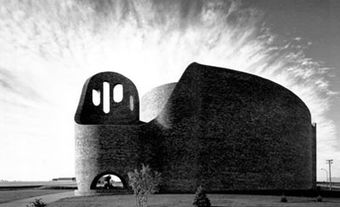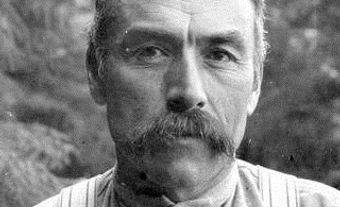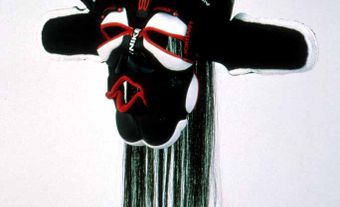Mungo Martin (also known as Nakapankam or Datsa), Kwakwaka’wakw carver, painter, singer, songwriter, teacher (born 1879 at Fort Rupert, BC; died 16 August 1962 at Victoria, BC). Mungo Martin was the stepson of Charlie James (recognized Kwakwaka'wakw carver), and tutor to Henry Hunt, Tony Hunt and Bill Reid. He was also known as Nakapankam, meaning a Potlatch Chief ten times over, or Datsa, meaning grandfather.
Artistic Contribution and Career
As an authority on various aspects of his culture, Mungo Martin helped renew pride in Kwakwaka’wakw heritage and traditions. Martin was carving during the prohibition of the Potlatch. His first commissioned totem pole, Raven of the Sea, was carved circa 1900 and installed at Alert Bay, British Columbia.
In 1948, the Martin was considered an exceptional carver. Additionally, he worked to protect Kwakwaka’wakw culture in the early 1950s, recording approximately 400 songs and Oral Histories at UBC and at the Royal British Columbia Museum in Victoria. In 1952, he moved to Victoria to begin a replication program of old poles. In 1984, Richard Hunt (son of Henry Hunt) became the carver-in-residence.
In 1958, Martin finished the World's Tallest Pole, which stands in Beacon Hill Park, Victoria. The pole stood overlooking the Juan de Fuca Strait until 2000, when it required restoration due to its decaying core. It was reinstalled in 2002. In 1961, Martin carved his last pole, which rests in Mexico.
Martin also built a traditional ceremonial big house at Thunderbird Park on the Royal British Columbia Museum grounds. The Mungo Martin House, named Wawadit'la, is a smaller replica of the big house located in Tsaxis (Fort Rupert). Its house posts bear the crests of three Nakapankam clans. The Wawadit'la opening ceremonies in 1953 also marked the first public Potlatch since the government's ban of Potlatch celebrations in 1889. Martin was awarded the Canadian Council medal for his efforts.

In 1970 a totem pole was raised in Alert Bay, British Columbia, in Martin's honour.

 Share on Facebook
Share on Facebook Share on X
Share on X Share by Email
Share by Email Share on Google Classroom
Share on Google Classroom




